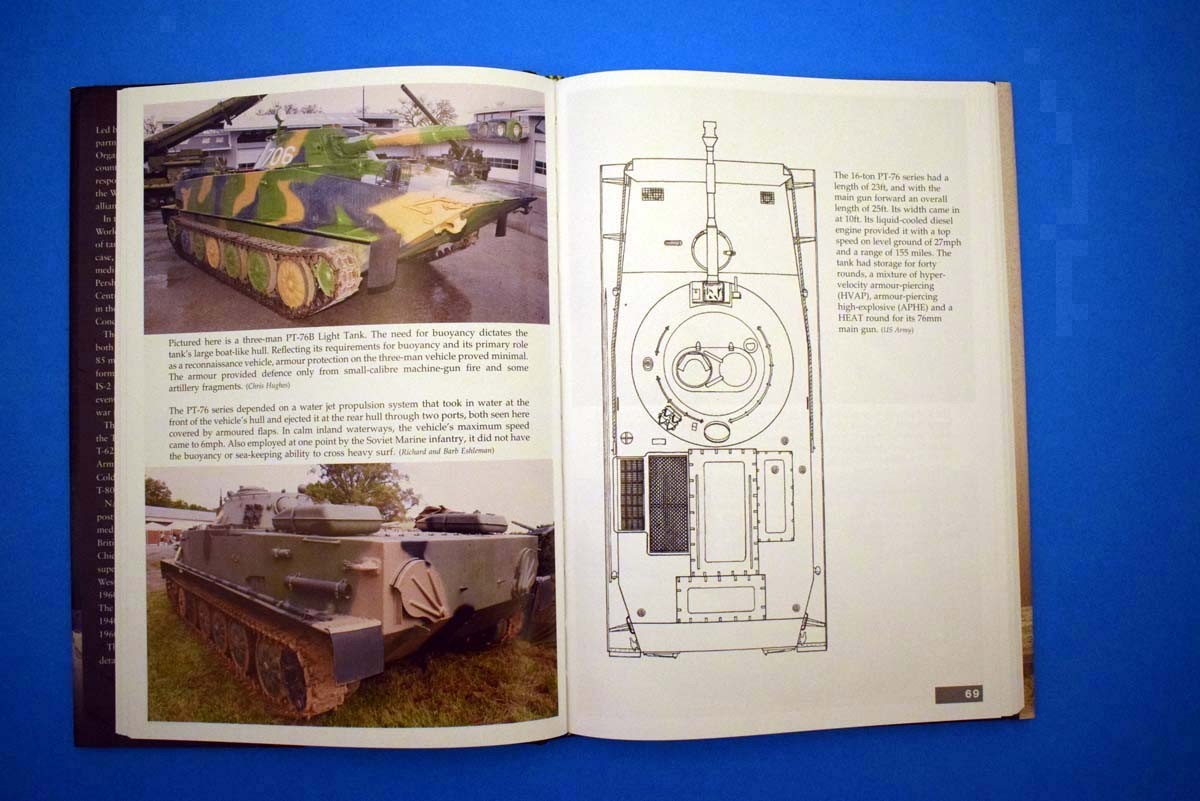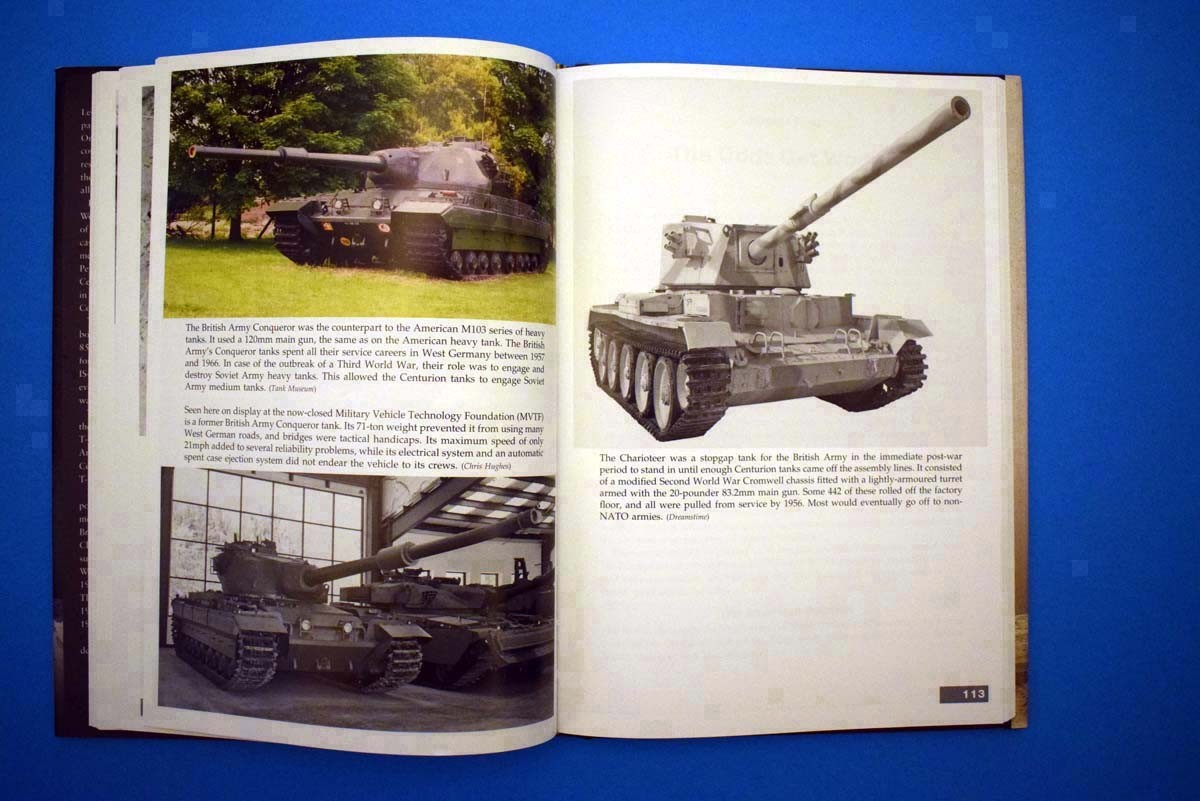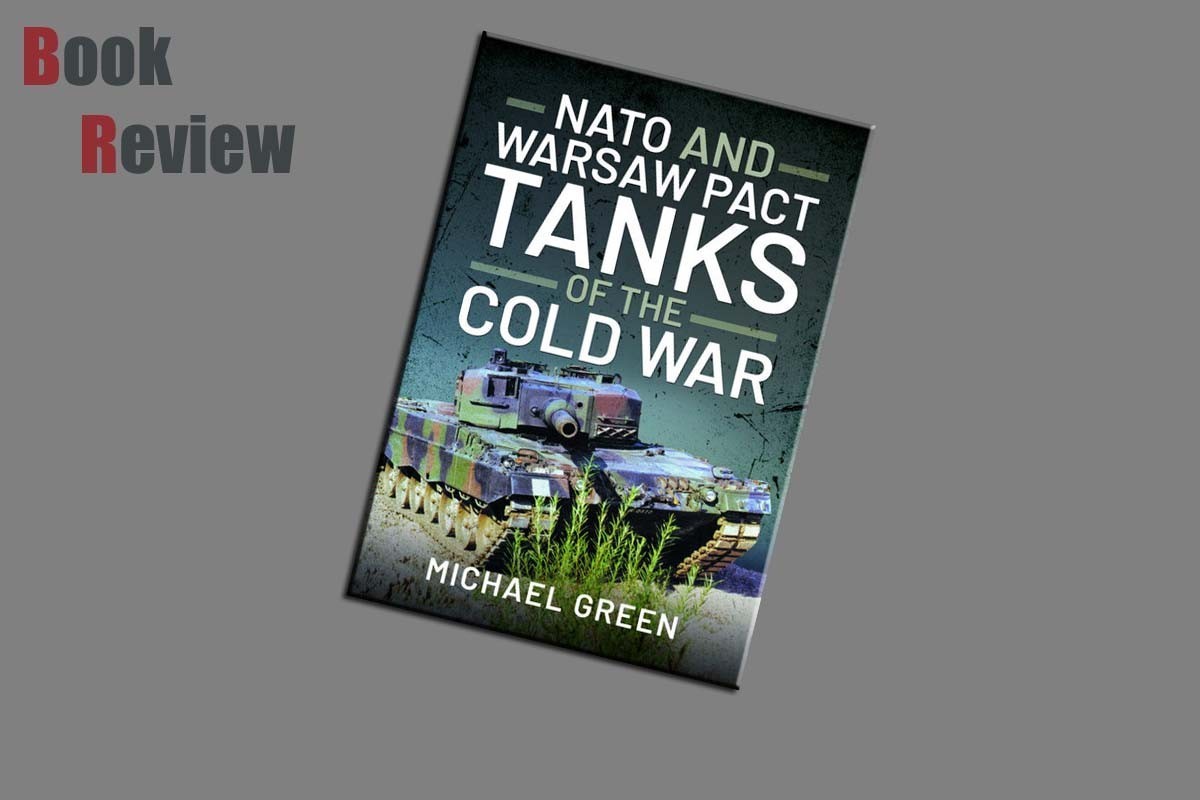
Introduction
The following introduction is taken from the Pen and Sword website:
Led by the USA with Western European partners, the North Atlantic Treaty Organization (NATO) was formed in 1949 to counter the Soviet threat. In response the Soviet Union assembled and dominated the Warsaw Pact in 1954. The mainstay of both alliances’ ground forces were their main battle tanks (MBTs).
Initially both sides relied on Second World War MBTs; in NATO’s case the Sherman medium tank and its successor the M26 Pershing together with the British Centurion and the heavy Conqueror.
The Soviets originally fielded the T-34-85 medium tank and the IS-2 and IS-3 heavy tank replaced by the T-10. Next came the T-54 followed by the T-55 and 155mm armed T-63 (1965). The final WP Cold War MBTs were the T-64, T-72 and T-80 all with 122mm main armament.
By contrast, NATO nations increasingly deployed a range of MBTs; the widely used American Patton series (M46 through M48), British Chieftain (1963) and Challenger (1982), French AMX-13 (1950) and AMX-30. From 1963 the Bundeswehr was equipped with the homegrown Leopard 1 and 2. The US M60 series and M1 Abrams came into service from 1980.
These and more MBTs and variants are covered in expert detail in this superbly illustrated book.
Review
This offering from Pen and Sword of a hard backed book titled NATO and Warsaw Pact Tanks of the Cold War is authored by Michael Green. The book is printed in portrait style with the pages stitched into the spine. The pages themselves have a gloss finish which shows the photographs off to a high standard. The contents of this title are presented as follows:
Forward
Acknowledgements
Notes to Reader
1 Immediate Post War Tanks
2 Building up the Numbers
3 Keeping Pace
4 The Odds get Worse
5 Keeping Up
6 Height of the Cold War
7 NATO catches up
In this book the author has looked at East v West from the end of World War II into and through to the end of the Cold War. Covered in brief are the proxy wars, where Eastern or Western troops either trained combatants to use their equipment or took an active role in the fighting. You will not be surprised to find that the first tanks making an appearance in this book were those serving at the end of WWII or coming into service as the war ended. The book looks at the progression of tanks through to the end of the Cold War, providing short write ups on each and also covering types of tank generally. At the end of WWII the Soviet tanks forces were armed with tanks that had larger guns and heavier armour. Whereas, the Western Allies were initially relying on the Sherman in its various forms. Although the Centurion tank and the Pershing tank were already in the works and larger tanks were on their way from the Western Allies in the late 1940s early 1950s.
The book offers a large number of photographs, approximately 200 in both colour and black and white. The photographs show images of the vehicles from the outside and in some cases the inside. There are also a number of illustrations in the title covering specific aspects of many tanks. As an example, the snorkel approach for fording rivers covers the issues that the tank will be vulnerable to. Each of the images has a well written caption of a reasonable length that should meet the requirements of most. Looking through the title I did not note any major problems with printing quality, text quality and photographic quality.
Conclusion
This title from Pen and Sword can be considered as a guide to the race between NATO and the Warsaw Pact to have the upper hand as regards armoured units. The initial idea seems to have been, whoever had the greater number of armoured units to throw into the meat grinder. Then the story of NATO having better tanks in terms of the number of kills they could be expected to make in the field during a high pressure conflict between East and West. To this effect the Cold War came to an end with Soviet forces relying on high numbers and NATO relying on “First shot, First Kill” and joint arms.




























